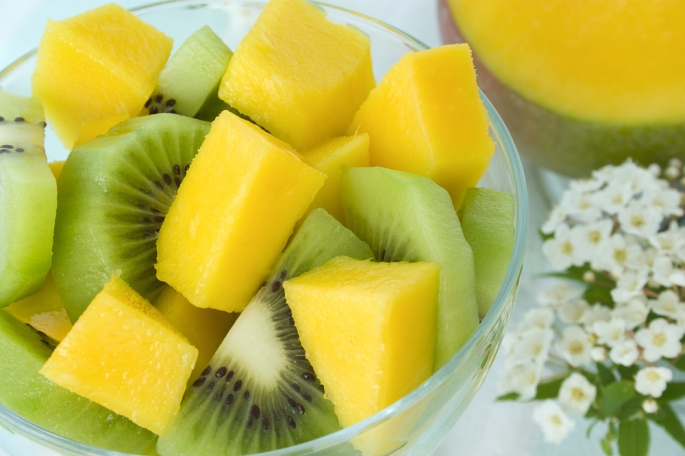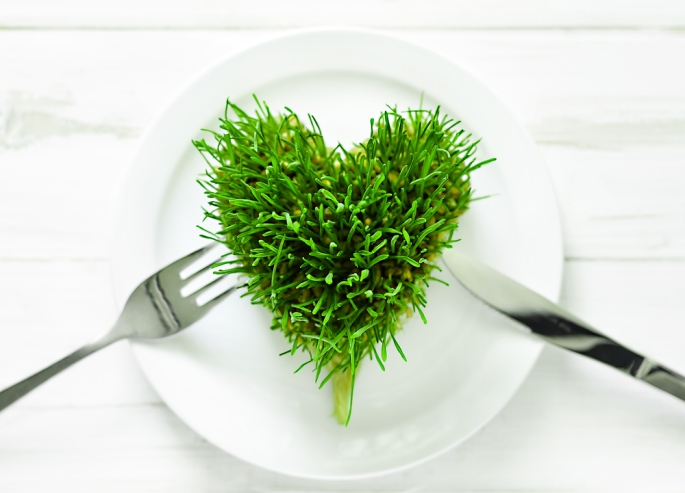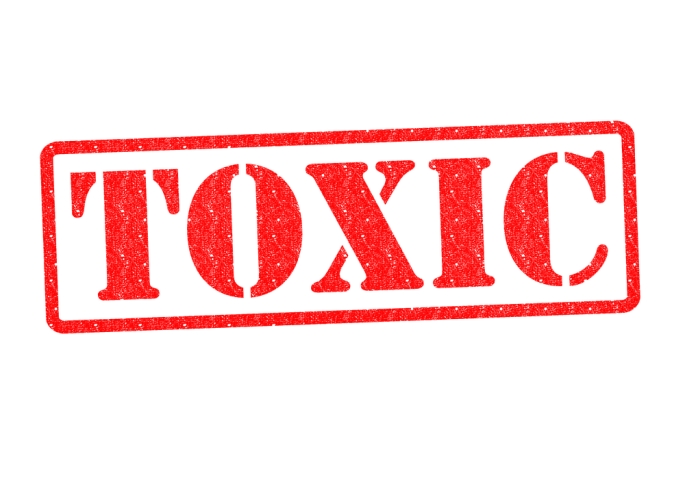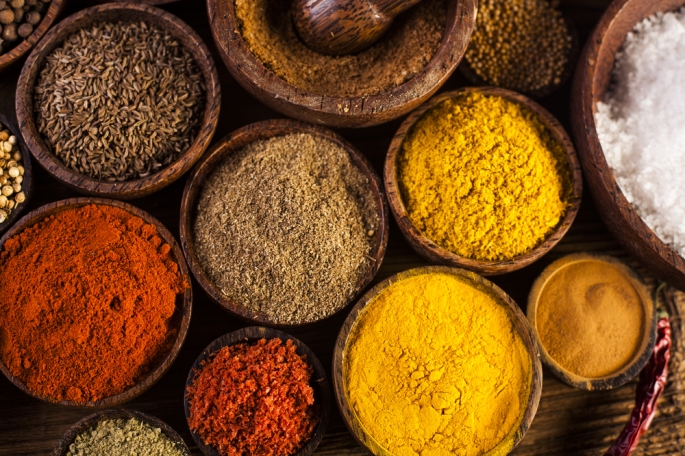Eating big meals full of meat with gravy, lots of pasta and second helpings of dessert can pack on the pounds and affect your overall health. When you save all your calories for one or two big meals a day, you’re more likely to overeat since it’s been several hours since your last meal.
Going up to five hours between meals usually won’t cause hunger pangs for most people. If you like to eat a late dinner, you might be setting yourself for overeating, and your metabolism will slow down.
When your body has to process a large amount of food at once, it can cause your digestive system to become sluggish. You don’t have to forego big meals for good. A big meal with all the trimmings is fine once in awhile, but don’t make it an everyday habit.
Be aware of not only what you eat, but how much of it you eat. The portions of mashed potatoes and gravy you eat at dinner and the slices of pie you eat for dessert can add pounds to your frame before you know it. Here are ten ways you can eat smaller portions during meals and snacks to maintain a healthy weight.
Limit Portion Size
Choose to eat a healthy portion of any food, and you won’t gain weight or suffer any ill effects to your health.
It’s not what you eat, but how much of it that causes problems. If you eat three Girl Scout cookies with a glass of milk, you won’t gain weight. If eat a whole box and wash it down with soda, your waistline (and your teeth) will suffer.
We know a whole box of cookies can total 2000 calories or more; a few cookies are only about 200. You can’t stay fit and healthy if you splurge on cookies and chips regularly. When you feel like snacking in front of the TV, try eating air-popped popcorn seasoned with cayenne pepper or whole-grain crackers. Even if you absentmindedly eat too much, you won’t gain as much weight as if you’d binged on cookies.
Portion control, however, applies to all foods – even the healthy ones. Learn to plan food portions when you cook, and be aware of how much you eat at restaurants.
Drink More Water and Herbal Tea
Drink more water before meals and between meals to fill up your stomach. You’ll eat less and be well-hydrated. Along with herbal tea, water prevents hunger pangs without the harmful effects (and calories) of soda, coffee drinks and energy drinks.
Here are a few low to no-calorie herbal teas to keep you full between meals :
- Green
- Oolong
- Goji
- Chamomile
- Ginger
Be careful when choosing herbal teas. Some teas, like green and oolong, contain caffeine and can cause you to become jumpy if you drink too much of it
Share Restaurant Meals with a Friend or Bring Home a “Doggie Bag”
According this article, 92% of American restaurants serve large portions, resulting in meals that often contain more calories than the recommended daily calorie requirement for an entire day.
Share an order with a friend, or eat half of an entrée at the restaurant and save the rest for later. Instead of ordering an entrée, order a salad or an appetizer. You can even order a children’s meal. Unless you have strong willpower, avoid the buffet.
Most servers will be happy to accommodate special requests, such as putting salad dressing or gravy in a cup on the side. (Putting salad dressing and condiments on the side prevents you from slathering too much on your food.)
Don’t be afraid to ask for a doggie bag for leftovers. Boxing or bagging leftovers makes sense. Restaurant meals, even at causal sit-down chains, are somewhat expensive, especially if you bring the whole family.
Use a Smaller Plate
We’ve been taught to eat everything on our plates since we were kids. It’s natural to feel guilty if we’re in a restaurant or at a dinner party and we fail to eat all the food in front of us. Learn to use smaller plates. With a larger plate you’ll apt to fill it up even if you know you shouldn’t.
Don’t Use Electronics While You Eat
Eat slowly instead of gulping down your meal. You’ll actually enjoy the taste and texture of your food, and you’ll eat less.
Instead of eating in front of the computer, use your dinner table. Family dinners have been shown to foster better relationships between spouses, as well as parents and children. A home-cooked meal, even one made by a beginning cook, is better for you than gulping down fast food in your car or at your desk.
Tip – Don’t lie down after eating as it will tamper with digestive process and may cause acid reflux, especially if you’ve eaten
Eat Smaller Meals throughout the Day
Studies differ on the advantages of eating smaller meals throughout the day, but the longer you wait between meals, the likelier you are to eat more when you do finally eat. Your body burns energy every time you eat to digest food. When you eat small meals several times a day, it boosts your metabolism and you burn more calories.
Eat oatmeal with blueberries for breakfast instead of bacon, eggs and pancakes. For extra fiber and nutrition, substitute groats for oatmeal. Groats are the whole, unprocessed form of oats. They take longer to cook, but are much more filling than rolled or steel-cut oats. Follow your breakfast of oatmeal or groats with an apple mid-morning, and eat a tuna sandwich at lunch time. Instead of a sugary coffee specialty drink in the afternoon, drink a sugar-free banana smoothie. This eating schedule may seem odd at first, like you’re denying yourself food, but all you’re doing is spreading your food intake throughout the day instead of cramming it into two or three meals.
Need more variety in a small-portion diet? Try this delicious 382- calorie Honey Roasted Carrot, Coriander and Ginger Soup with Crunchy Chickpea Croutons soup for lunch or a late afternoon pick-me-up. Here’s a list of portion-controlled, low-calorie recipes to prevent overeating caused by super-sized food servings.
Tip- Your body may take up to 20 minutes before you realize you’re full. Slow down your eating by taking smaller bites and thoroughly chewing your food before swallowing. Make sure your mouth is empty before taking another bite of food.
Get between Seven and Nine Hours of Sleep Each Night
When you’re tired, you tend to crave more carbohydrates and overeat.( Fatigue’s been shown to stimulate production of Ghrelin, a hunger-inducing hormone.) After you eat cake, doughnuts or other processed carbs, you’ll feel energetic for awhile, but it’ll soon fade. Getting enough sleep provides you with more natural focus and energy to get through your day and perform tasks, and it curbs your appetite too.
Choose Whole, Unprocessed Foods
When you replace processed foods with fresh foods, and eat smaller meals several times each day, you’ll lose weight or, at the very least, maintain your current weight. And you’ll feel “lighter” and healthier instead of feeling “stuffed” after each meal.
Eat a salad, low-fat chicken soup or veggies as an appetizer. The fiber helps control your appetite and fills you up fast. Veggies, salad and other fiber-heavy foods travel more slowly through your digestive system. Broccoli, spinach and tomatoes are just a few vegetables that’ll fill you up and add valuable nutrients to your diet. Broccoli is high in Vitamin K, Vitamin C, iron and potassium. It also contains many plant compounds that contribute to better health, including sulforaphane, which protects against many different types of cancer.
A study in the New England Journal of Medicine shows that eating potato chips or French fries regularly leads to a bigger weight gain than noshing on other comfort foods.
If you can’t summon the willpower to stop eating chips and cookies, then keep your house free of sugary and salty treats until you can exercise self control. Replace high-calorie snacks with fresh fruits.
Diets high in red meat, alcohol, sugary drinks and processed flour also lead to an arthritic condition called gout. Avoid gout by eating more eggs, whole grains, Vitamin C, low-fat dairy products and drinking more water. Also avoid certain food combinations when planning meals. Eating bacon and eggs, or any two concentrated protein sources in a single meal will impede digestion and cause fatigue.
Measure Your Food When Cooking at Home
At home, don’t guesstimate how much salt, flour or butter you’ll need for a recipe – at least until you until become skilled at it. Buy an accurate scale, measuring cups and measuring spoons if you don’t have them already.
When you cook at home, include protein (beans, lean red meat, etc.) and low glycemic index carbohydrates (whole grains, pasta) with every meal. When figuring portions, a half cup of oatmeal or pasta is referred to as a single serving. Two cups of raw spinach equals one serving; half a cup is the best serving size for cooked or canned veggies.
Serve food from the stove or a separate serving station. If you eat from serving platters at the table, it’ll be easier to lose track of how often you help yourself to more food. You’ll be more aware of going for your third or fourth helping if you have to get up and walk to the stove or counter to get food.
It may seem a little old-fashioned to schedule meals at exact times, but it does help you focus only on eating and prevent you from multi-tasking when you should be enjoying your food. You shouldn’t do anything but eat while you’re at the table – unless, of course you have an interesting tablemate. Talking with a friend or family member may actually make you eat less, while other distractions make you eat more.
You’ll be better able to keep track of how much you eat when you schedule regular meals. When meals are scheduled and just a few hours apart, you’ll be better able to control cravings for junk food and quick trips to the Starbucks.
Distract Yourself When You’re Tempted to Overeat
Although drinking coffee at Starbucks costs more than brewing it at home, many people buy their lattes from coffee shops because of the social outlet it gives them. You don’t need to give up the social aspect of going to Starbucks or another local coffee shop – just order plain coffee instead of sugary coffee drinks with whipped cream on top.
If you eat when you’re bored or upset, try doing something else to pass the time and forgot about food. Take a walk, visit a friend or do yoga. You’ll soon be immersed in your new activity and lose the desire to snack.
Eat a cup of low-calorie vegetables before a meal as an appetizer, or add vegetables to casseroles and sandwiches. Adding a low-calorie vegetable to a meal supplies nutrients, and its high water content fills you up to prevent overeating.
Portions and Digestive Health
Your digestive system consists of your mouth, esophagus, stomach, intestines, liver pancreas and rectum. That’s a lot of body parts for a seven-course meal to work its way through three times a day, everyday. Large meals of processed foods keep you “backed up”. If you eat three heavy meals daily, your body has to work extra hard to process all that food. It’s much better to eat smaller, more frequent meals. If you must eat larger meals, choose lighter foods – fish, organically-raised poultry, vegetables and whole grains – instead of the usual meat and potatoes.
The most common digestive problems related to overeating and bad food combinations include upset stomach, nausea, bloating, acid reflux and constipation.
Watching your food portions during meals – and when you’re snacking – helps you stay fit and energetic. It may take awhile to get used to eating smaller portions and saving the rest for later, but once you find out how much better you feel when you eat light, you won’t go back to “stuffing” yourself at dinner.
For extra energy in between meals, take a REVV Instant Energy Wafer. REVV is made with the superfood wheatgrass, along with periwinkle herb, choline, L-taurine and tasty, healthy cocoa. REVV’s a safe, natural supplement that gives you vigor without the sugar and calories of energy drinks.











